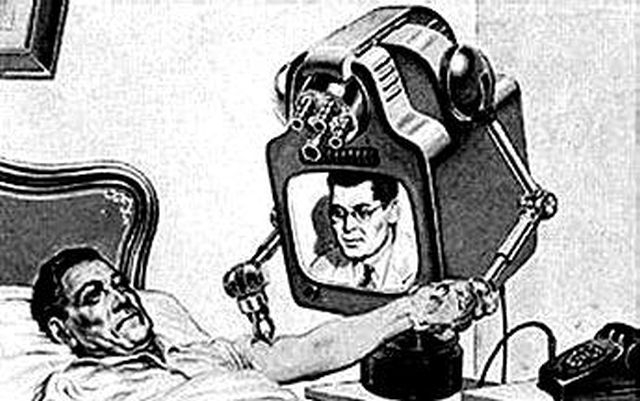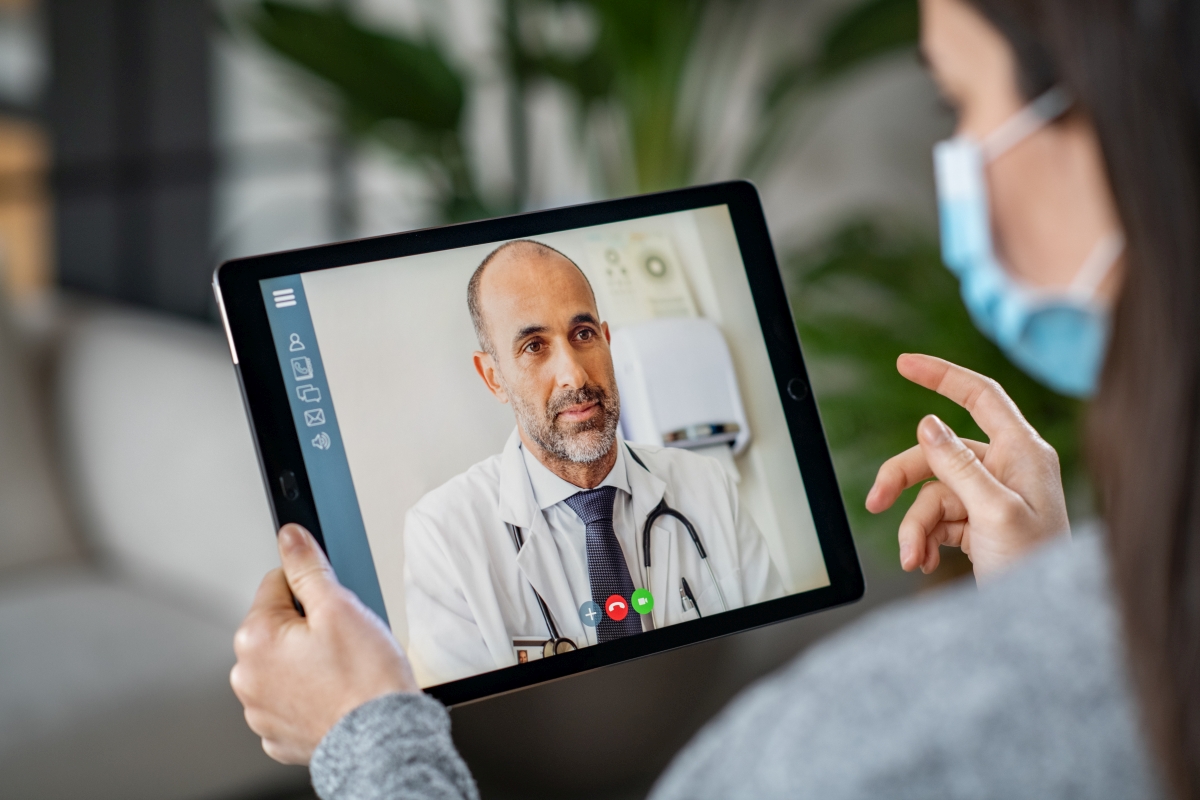Exactly How Teledoctors Are Changing Modern Medical Care
Exactly How Teledoctors Are Changing Modern Medical Care
Blog Article
Teledoctors: Linking the Void In Between Individuals and Health Care Suppliers
The introduction of teledoctors stands for a considerable shift in the healthcare landscape, supplying remedies to long-lasting access problems dealt with by clients and service providers alike. By incorporating telemedicine right into conventional practices, medical care systems can get to underserved and remote populations, giving vital clinical assessments without the obstacles of distance and travel. This standard shift not just improves patient engagement but additionally optimizes source appropriation for providers. Nonetheless, the extensive fostering of teledoctors increases important concerns about the sustainability of such methods and the implications for future medical care delivery. What obstacles lie in advance in ensuring this design's effectiveness and equity?
Surge of Telemedicine

The increase of telemedicine is likewise fueled by the requirement for affordable healthcare. Healthcare systems globally are under stress to lower expenditures while preserving high quality care, and telemedicine offers a viable remedy. By decreasing the requirement for physical check outs, telemedicine decreases overhead prices for medical care facilities and ultimately lowers the economic problem on clients.
In Addition, the COVID-19 pandemic worked as a driver, accelerating the fostering of telemedicine methods. Social distancing steps and the demand to lessen exposure threat required a shift in the direction of remote assessments, prompting governing bodies to support and adjust telehealth services. This change has not only tried and tested telemedicine's efficiency however also its potential to advance as a staple component of modern healthcare systems.
Advantages for Clients
As telemedicine continues to improve healthcare shipment, patients stand to get significantly from this makeover. Mainly, telemedicine boosts ease of access, permitting clients in underserved or remote areas to get in touch with healthcare carriers without the need for substantial traveling. This is especially valuable for individuals with wheelchair concerns or those living in rural areas where medical care facilities may be limited. Telemedicine additionally offers individuals the ease of receiving medical recommendations and therapy from the convenience of their homes, reducing the time and expense linked with taking a trip to a healthcare facility.
Additionally, telemedicine sustains connection of treatment by helping with routine follow-ups and tracking, which are important for handling chronic conditions. Patients can conveniently arrange visits and access healthcare solutions outside typical workplace hours, fitting their busy lifestyles. This adaptability brings about enhanced client engagement and adherence to therapy strategies, potentially resulting in far better health and wellness results.
Additionally, telemedicine can aid alleviate the risk of infection transmission, a concern enhanced by the COVID-19 pandemic. By lessening the need for in-person visits, people can prevent crowded waiting areas and minimize exposure to transmittable diseases. Ultimately, telemedicine encourages clients by providing prompt, efficient, and individualized health care solutions.
Advantages for Providers
For medical care companies, telemedicine supplies considerable benefits that improve the performance and reach of their practice. By leveraging electronic technology, suppliers can extend their solutions to a more comprehensive market, consisting of those in remote or underserved locations. This not just minimizes geographical obstacles but additionally optimizes individual retention and procurement by making healthcare a lot more accessible.
With telemedicine, the need for physical room decreases, enabling providers to save on real estate and operational costs. This versatility can lead to boosted individual examinations per day, consequently enhancing earnings possibility.
Telemedicine additionally promotes a much more collective atmosphere for doctor. teledoctors. It allows seamless sharing of patient information amongst professionals, enhancing diagnostic accuracy and treatment end results. In addition, electronic platforms can integrate with digital wellness documents (EHRs), improving data precision and enhancing administrative tasks
Moreover, telemedicine boosts individual fulfillment, which is vital for supplier track record and success. By providing convenient and prompt treatment, companies can enhance person commitment and engagement, better enhancing the provider-patient relationship.
Conquering Challenges
While telemedicine provides countless advantages for health care carriers, it likewise offers obstacles that need cautious factor to consider. Medical care providers should stick to rigorous regulations like HIPAA to safeguard sensitive details, thereby requiring investment in protected systems and recurring team training. teledoctors.
Another challenge is the digital divide, which can impede accessibility to telemedicine solutions. Not all patients have equal access to the essential technology or internet connectivity, particularly those in rural or underserved areas. This disparity can exacerbate existing healthcare inequalities, making it essential for suppliers to check out alternate options, such as collaborations with neighborhood organizations, to connect this gap.
Additionally, there are limitations in conducting checkups remotely. Particular problems call for in-person evaluation, highlighting the requirement for a hybrid version that incorporates telemedicine with typical brows through. Carriers have to browse these difficulties by developing protocols to recognize when telemedicine is proper and guaranteeing seamless changes in between online and in-person treatment.
Future of Health Care
The future of health care is poised for a transformative evolution, driven by the rapid integration of innovation and development. Central to this change is the increase of telemedicine, which is redefining how medical solutions are accessed and provided. With advancements in data, telehealth systems are becoming extra advanced, offering real-time assessments, remote client surveillance, and personalized treatment plans. check my reference This not only boosts client comfort but likewise increases access to healthcare, especially in underserved and country areas.
Fabricated knowledge (AI) and artificial intelligence are likewise check that set to play crucial duties. These modern technologies can examine substantial quantities of data, providing anticipating understandings right into patient health, improving diagnostic accuracy, and customizing therapy strategies. AI-driven devices can increase doctor' abilities, causing even more educated decision-making and much better individual results.
Additionally, wearable modern technology and Internet of Medical Things (IoMT) tools are revolutionizing individual involvement and proactive health administration. These tools make it possible for continuous health and wellness tracking, permitting for very early detection of prompt treatments and potential issues.
As these innovations continue to development, they assure to develop an extra reliable, accessible, and patient-centric healthcare system, ultimately connecting the space between individuals and doctor. - teledoctors
Conclusion
Teledoctors are transforming healthcare by considerably enhancing ease of access and efficiency with remote examinations. This improvement sustains individuals in underserved locations by supplying timely medical recommendations without needing physical brows through, hence boosting person involvement and connection of treatment. Doctor gain from more efficient time management and enhanced cooperation possibilities. Regardless of obstacles such as technical barriers and regulative problems, the future of medical care shows up efficient and significantly comprehensive due to the assimilation of telemedicine right into conventional treatment designs.

As telemedicine continues to improve healthcare distribution, clients stand to obtain considerably check out here from this transformation. Mostly, telemedicine boosts ease of access, permitting patients in underserved or remote areas to seek advice from medical care suppliers without the requirement for considerable travel. Telemedicine likewise supplies patients the comfort of obtaining medical guidance and therapy from the convenience of their homes, reducing the time and cost connected with taking a trip to a healthcare facility.
Eventually, telemedicine equips people by providing timely, effective, and customized medical care solutions.
Report this page